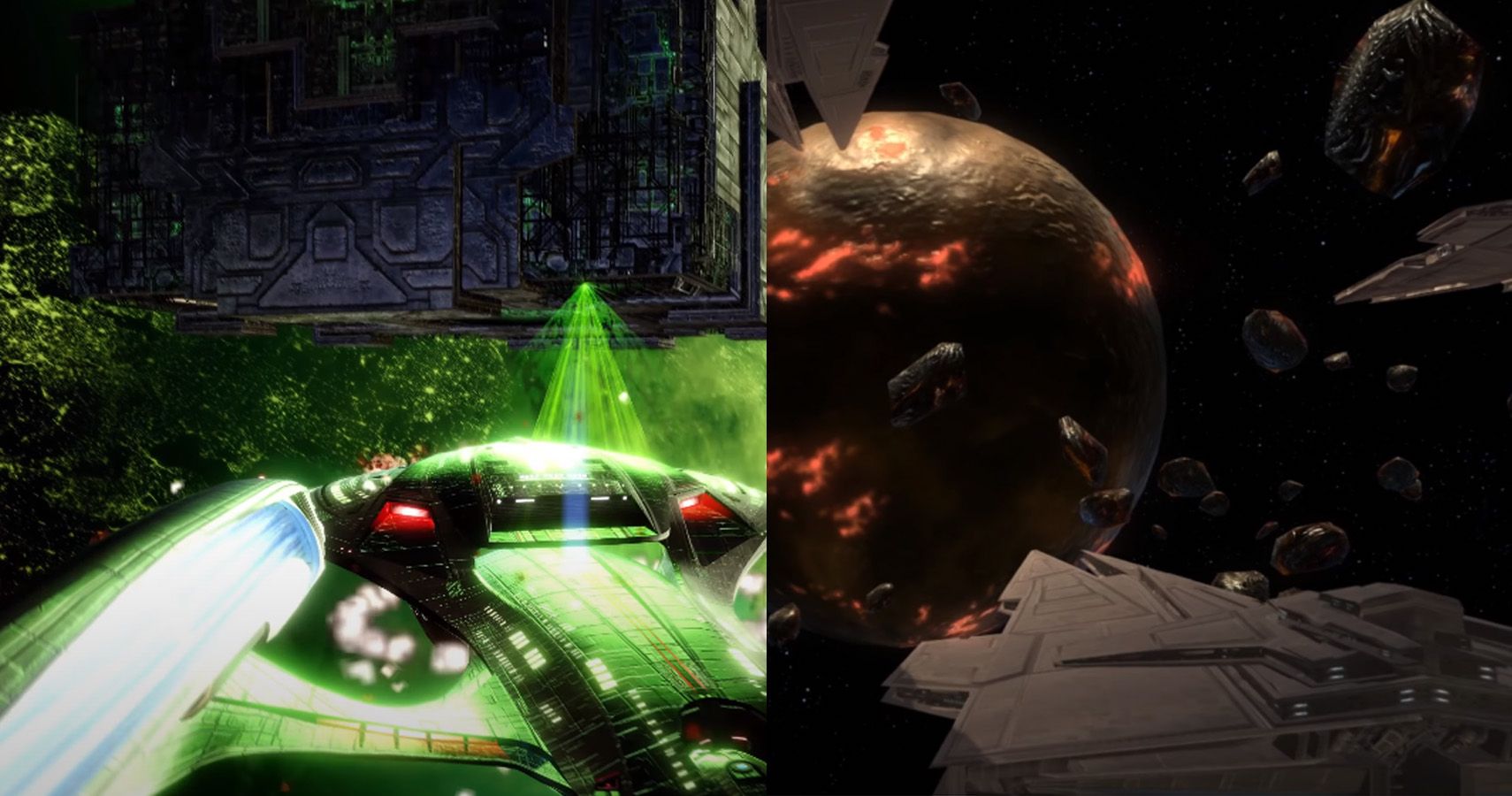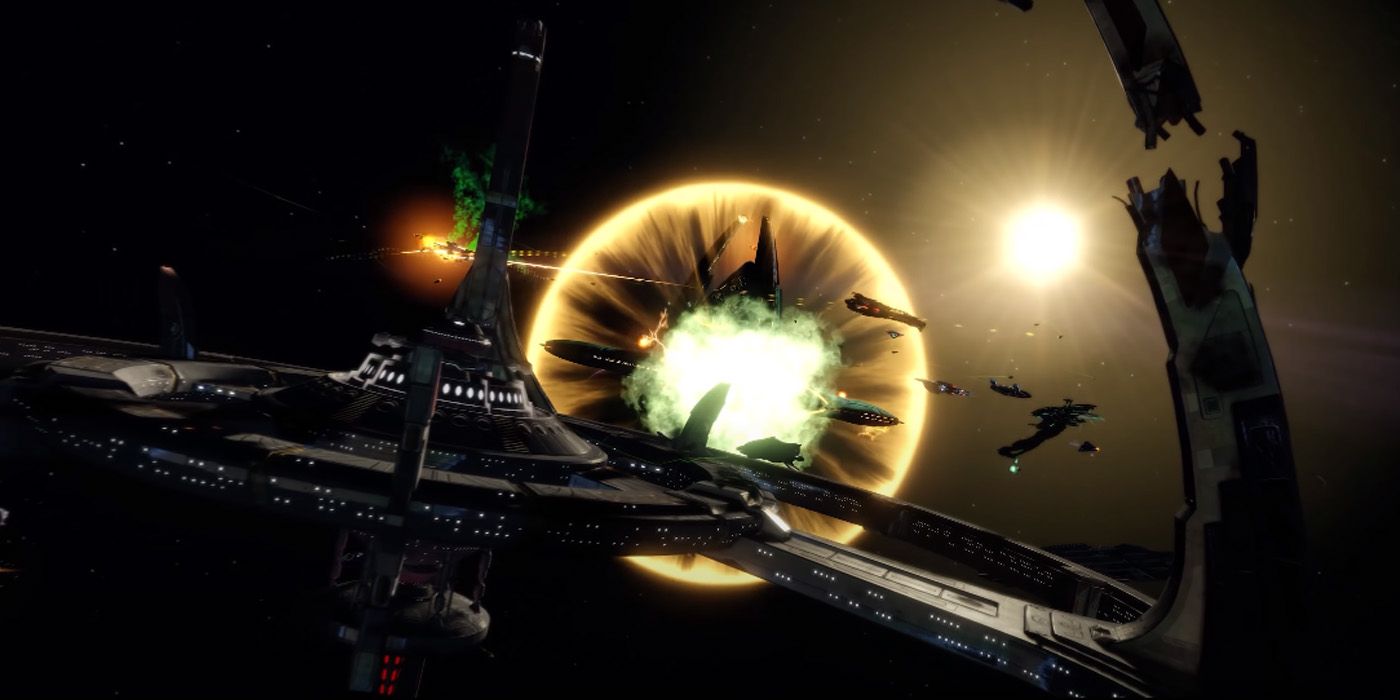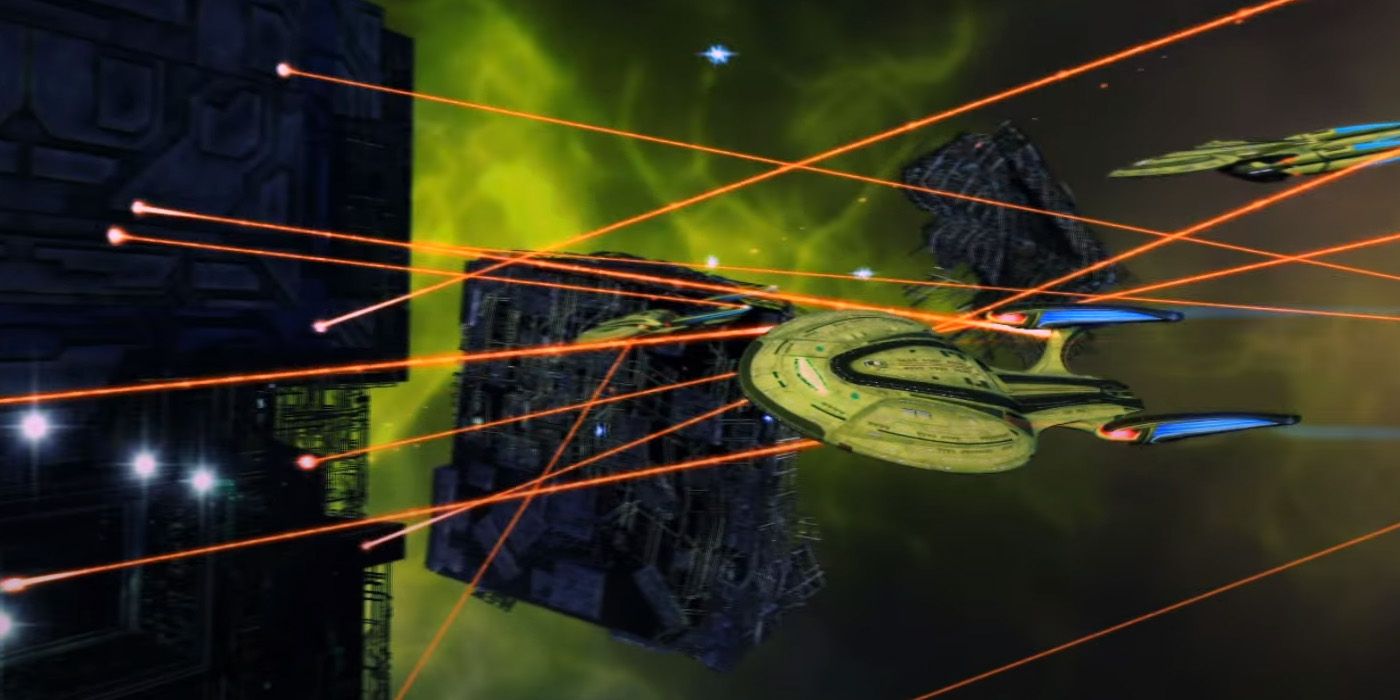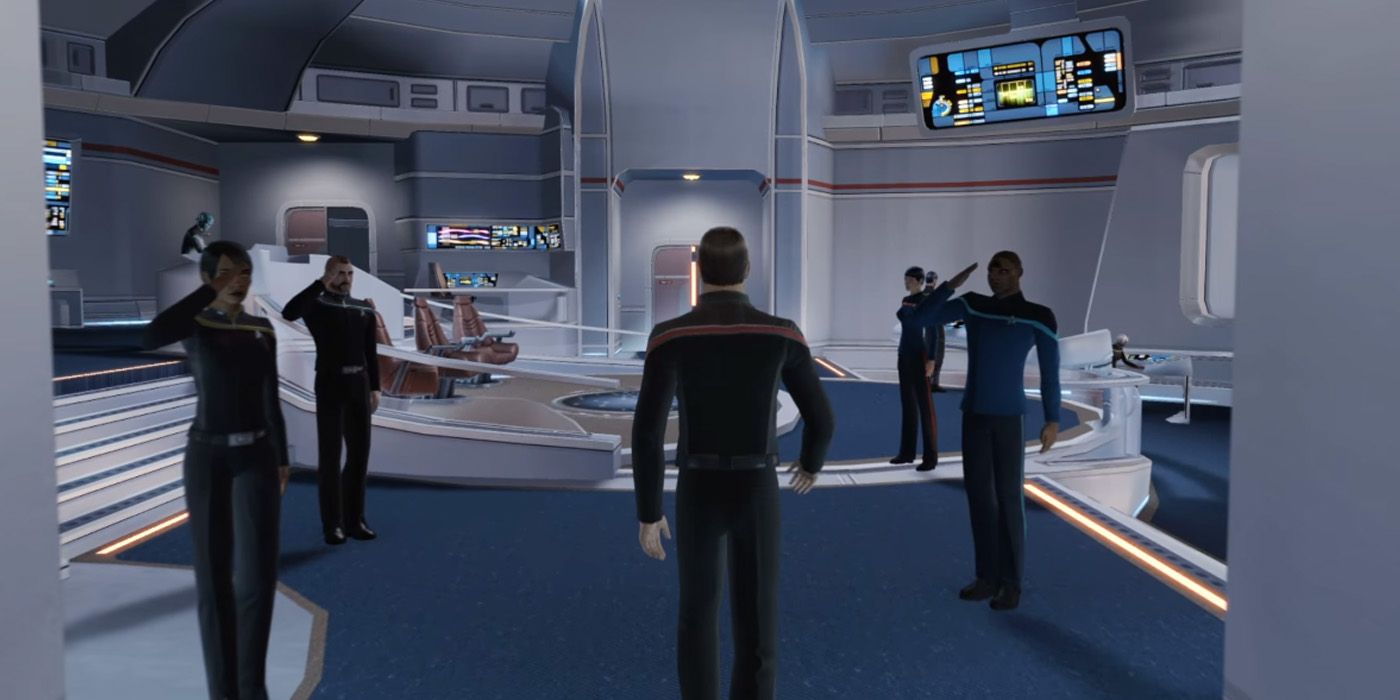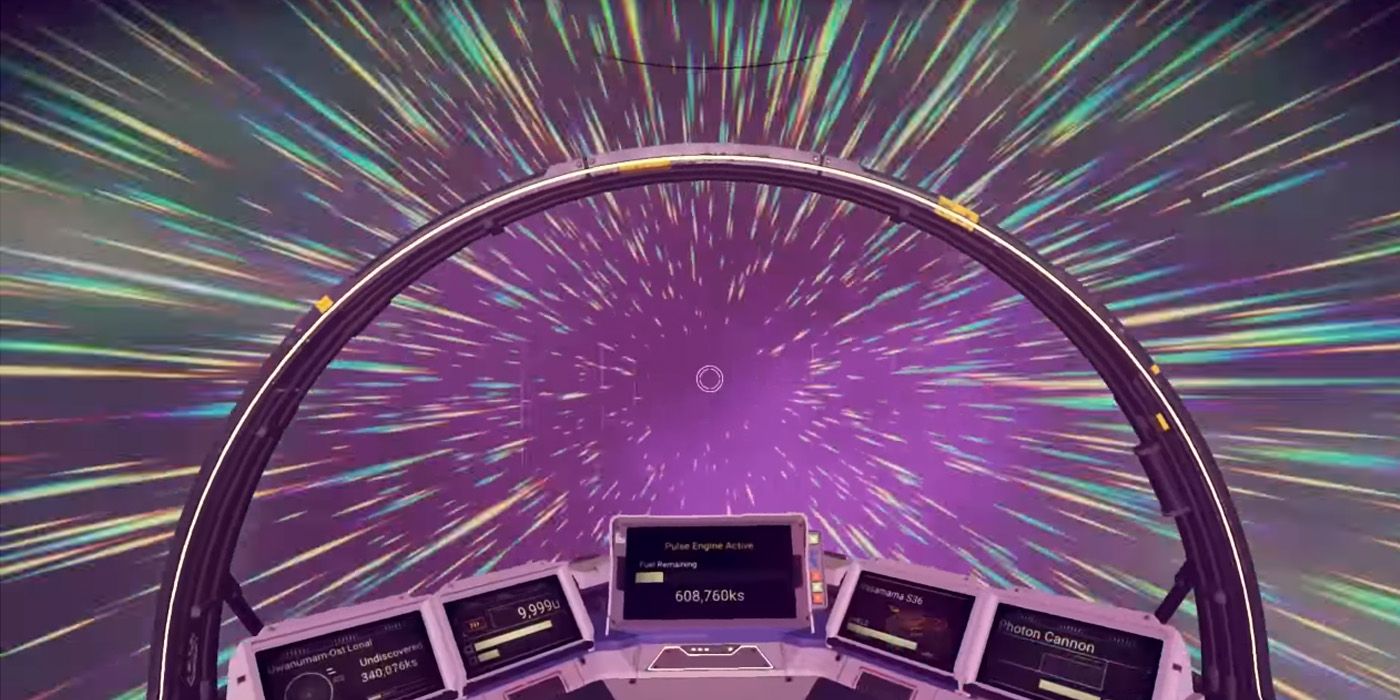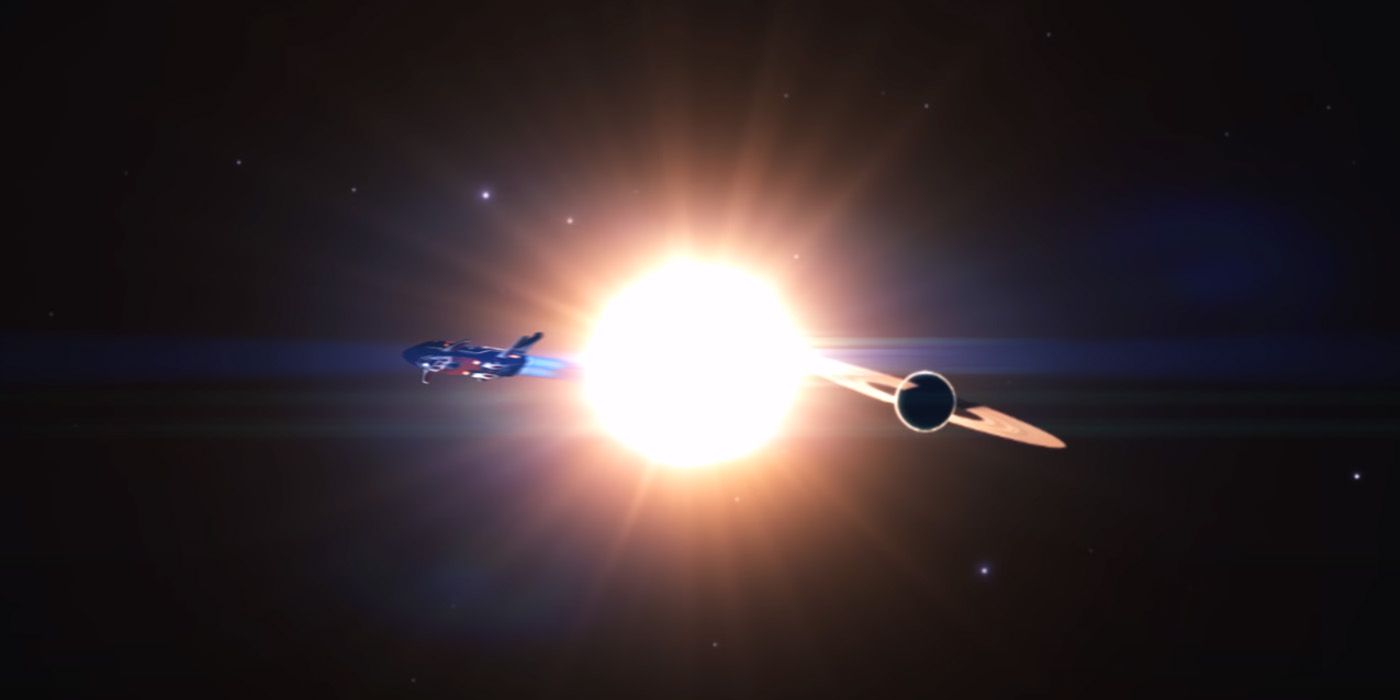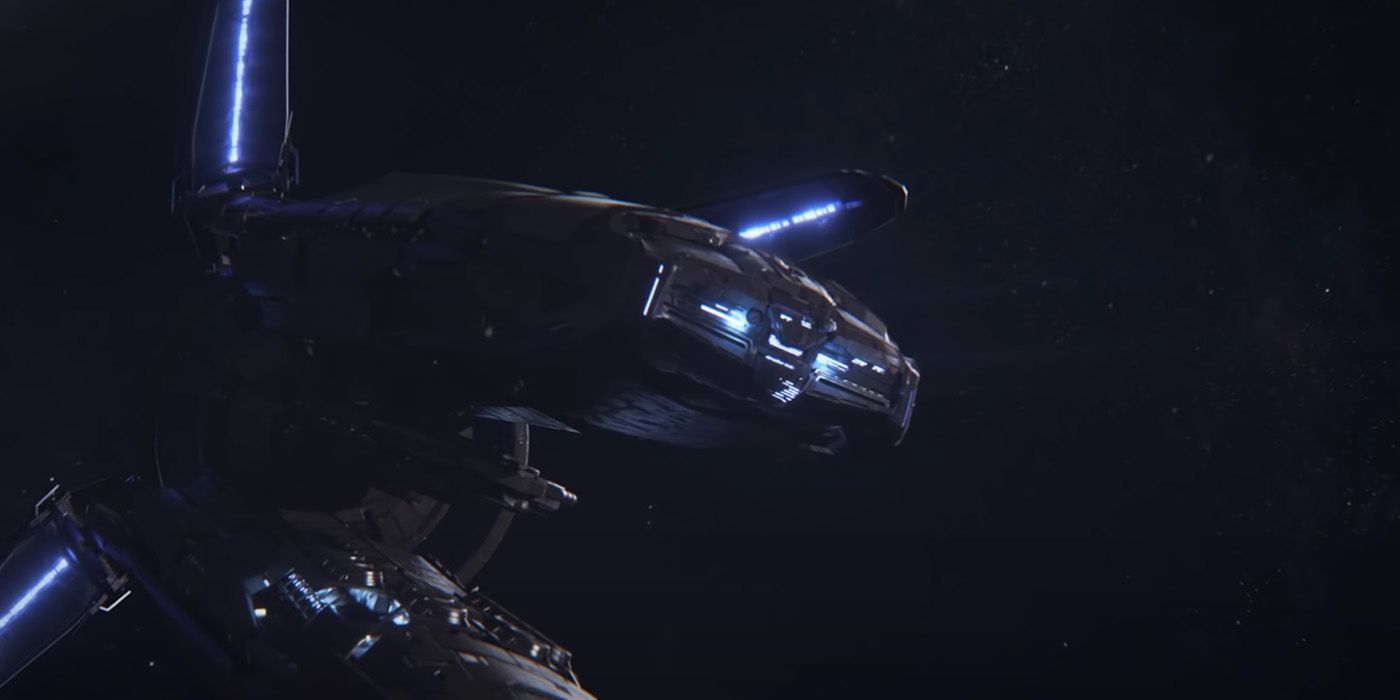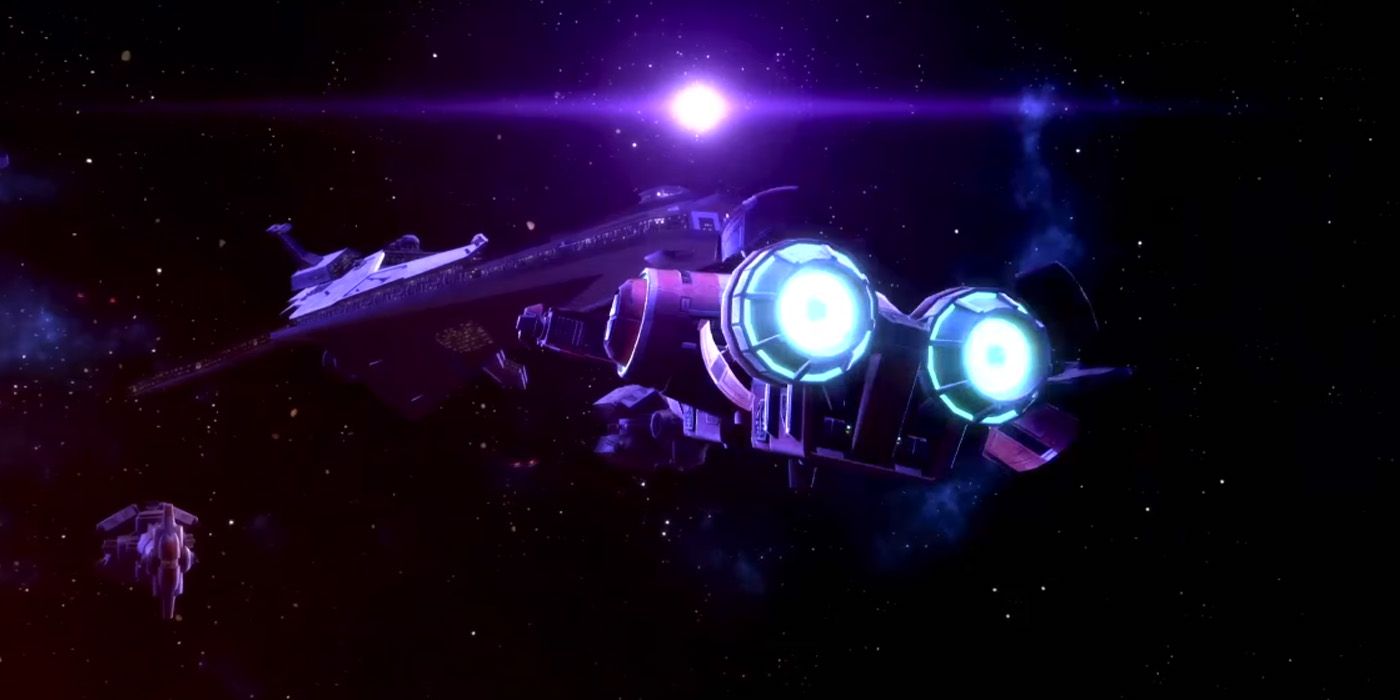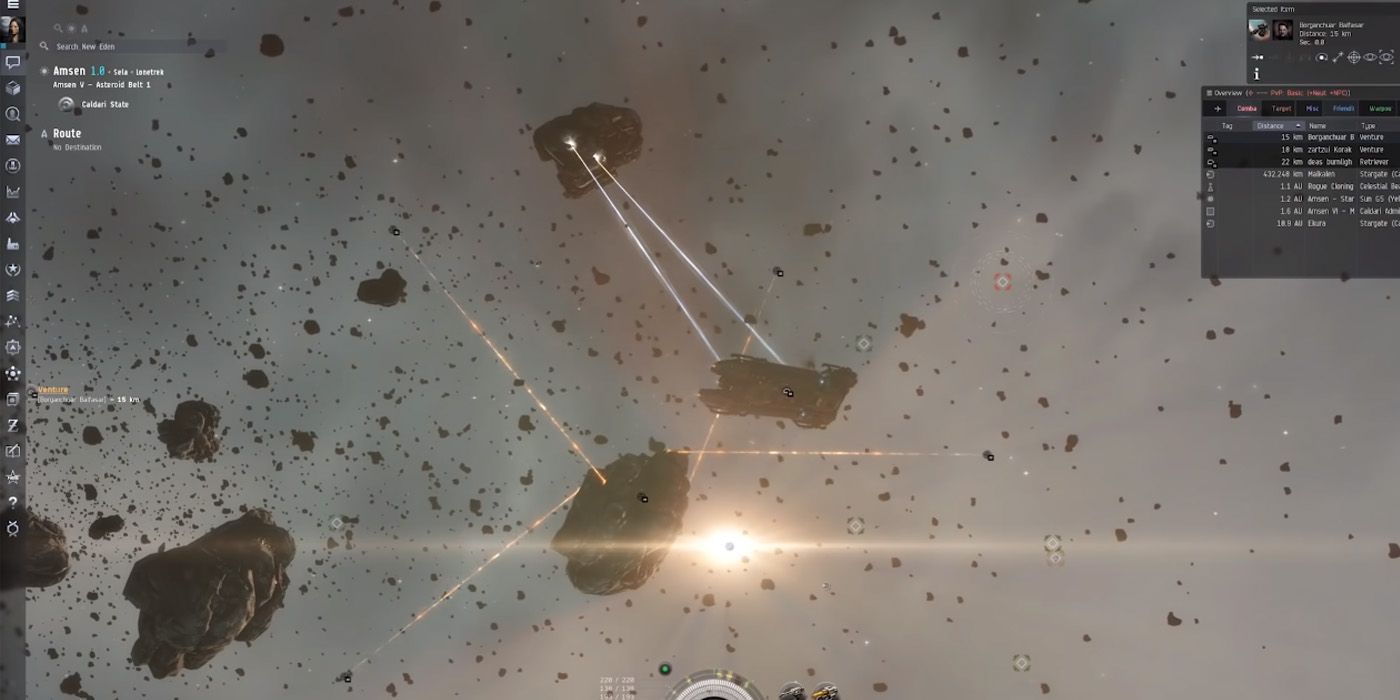As shown in franchises such as Star Trek and Star Wars, humanity's future lies with the stars. These sci-fi stories show intergalactic kingdoms, interplanetary intrigue, and a journey to change the galaxy. Additionally, science and physics showed in these games demonstrate the sheer vastness of space.
Interestingly, video games such as Mass Effect and Halo show technology humans can use to make space colonization possible. Unfortunately, these critically-acclaimed games don't get everything right in terms of realism. Space, the stage of these massive stories, often gets misrepresented in sci-fi stories. Where does this happen?
10 WRONG: Explosions Don't Last Long In Space
Games such as Star Wars: The Old Republic take essential and iconic Star Wars elements such as lightsabers, the Force, and gigantic space battles. In The Old Republic, players can use both Republic and Imperial ships to conduct battles in space. It feels thrilling blasting through enemy ships.
However, victory will only be sweet for a short time. Unlike in video games, real "blasts" in space combat will only be visible for a short while. Basically, blasts can't occur in space because fire from explosions needs oxygen, something space doesn't have. In other words, hitting ships will simply create a brief flash of light, followed by floating debris.
9 RIGHT: There Is "Sound"
Fans of Alien (and games such as Alien: Isolation) will remember the tagline: "In space, no one can hear you scream." Physics-wise, sound waves need to travel through a medium. Since space possesses very few particles; there's not much opportunity for "noisy" interstellar phenomena. However, some waves only need spacetime to travel, like gravitational waves.
Thanks to the LIGO Observatory, scientists finally detected gravitational waves for the first time. These gravitational waves have frequency and amplitude, just like sound waves. Einstein's General Relativity gives scientists "predictions" how gravitational waves may "sound" like. And while there's no way to hear sound in space the conventional way, perhaps sci-fi fans can consider that video game ships have built-in tech that converts gravitation waves to sound.
8 WRONG: Travel Isn't Always Fun
It will take conventional spaceships 150 to 300 days to reach Mars. Accidents can happen in that time, with little to no chances of repair. Lightspeed travel can fix this problem, which in-game tech uses to make fast travel to planets possible. Moreover, spaceships encounter trouble only when the plot deems it necessary.
These factors give a pretty optimistic view of space travel. However, future pilots will always have to consider things such as gravitational pull, planetary orbits, sun flares, and other situations that may put them off-course or damage the ship.
7 RIGHT: Cheat Our Way To Lightspeed
Unfortunately, the only way for humans to reach the furthest parts of the galaxy is to find some way to go past lightspeed. However, lightspeed is the absolute speed limit of the universe. Thanks to sci-fi videogames, various franchises have their unique ways of incorporating faster-than-light travel to their stories. While many of them are still "theories" in the real world, they show the next-best way of achieving lightspeed.
For instance, Star Wars has Hyperspace, a "dimension" starships traverse to travel faster than light. In Star Trek and other games, they have warp technology. With exotic matter, warp technology allows ships to "bend" spacetime to propel their ships to distances faster than light.
6 WRONG: It Should Be Pretty Empty
When future space pilots look out the window of their cockpits, they'll expect to see a vast landscape of planets, moons, stars, and stardust. So when games like No Man's Sky released, it rewarded players with such a stellar view.
Unfortunately, space is relatively devoid of particles, meaning there's not much to be seen anywhere. For instance, Alpha Centauri (the nearest star system) is 4.367 light-years away from Earth. Faster-than-light technology in games can reduce this into mere minutes, whereas conventional spaceships will take around 78,000 years. Aside from planets in the Solar System and bodies in the Kuiper Belt, there isn't anything else. This factor means that 78,000 years of going to Alpha Centauri will likely only have the blackness of space as a background.
5 RIGHT: Procedural Generation Makes Sense
Players excited with No Man's Sky wanted to explore 18 quintillion planets. Instead, their ships experienced bugs, a bland story, and repetitive gameplay. Moreover, fans got disappointed with its procedural generation system, which creates its planets. Ideally, the game should make unique environments for each planet. Instead, it seemed artists simply created numerous ideas that a system mashes together to form a world. Players found the somewhat repetitive nature of finding planets rather dull.
However, it's relatively accurate in real life, as exoplanets do simply range from terrestrial (e.g., Earth), gas giants (e.g., Saturn), ice giants (e.g., Neptune), and dwarf planets (e.g., Plut0). When astronomers find unique planets such as 55 Cancri e (primarily made of diamond), they're incredibly rare.
4 WRONG: Combat Isn't Priority
Sci-fi titles such as Halo, Mass Effect, and Call of Duty: Infinite Warfare boast action-packed space combat with soldiers in special suits equipped with advanced weapons. Insofar as space travel goes, most space sci-fi titles remain accurate in the need for spacesuits for humans to survive. However, having space suits designed for combat might be far-fetched, considering the dangers of outer space.
Astronauts need spacesuits to protect them from the vacuum of space. These suits provide breathable oxygen, balances temperature, provides water, and protects them from dust and radiation. These factors mean most spacesuits are full of essential components, with any damage putting the suit and astronaut at risk.
3 RIGHT: The Unknown Is Dangerous And Scary
Despite the negative reception of Mass Effect: Andromeda, it does show a possible future of space travel. The game is set in the Andromeda Galaxy, with players and their companions unaffected by the events of the original trilogy. In Andromeda, players are tasked in helping their Ark settle in a habitable planet in the galaxy. Unfortunately, they have to investigate the mystery of other Arks being lost, and the many unknown races in the galaxy.
The game shows players the reality of future space travel: it's not always about dogfights and conquest and heroes. Sometimes, space travel is all about a mission to either find a home for humanity or doom it to destruction.
2 WRONG: There's Less Need For Thrusters
Spaceships don't necessarily need to keep thrusters on all of the time. In space games, spaceship battles often feel like races where there's always a need to accelerate the ship. However, physics in outer space says otherwise.
Moreover, cars and moving objects on Earth only need thrust due to various forces acting upon them. In space, all those "extra" elements aren't present. This factor means just lightly push an object in space and it'd continue to move forward until something stops it. Likewise, spaceships would only need to use their thrusters for a short while and they'll move forward indefinitely. They only need to turn thrusters again to switch direction, slow down, or speed up.
1 RIGHT: It's Vast, Boring, Risky
EVE Online might be 17 years old (as of writing), but it packs a lot of punch with its wealth of content and realistic take on space exploration. Players of EVE Online find themselves in a single shared universe, where they're responsible for the economy, politics, and even warfare in their respective regions.
However, despite massive space battles, war doesn't happen in EVE Online all the time. Moreover, most EVE Online players spend their time mining resources, chasing bounty, or even using bots to do mining for them. Many might say this kind of gameplay might be "boring," but this describes the reality of space for corporations and governments with space programs: getting into conflict is risky and expensive, and pursue easier and cost-effective ways to mine for resources.

